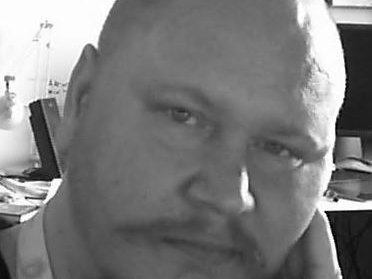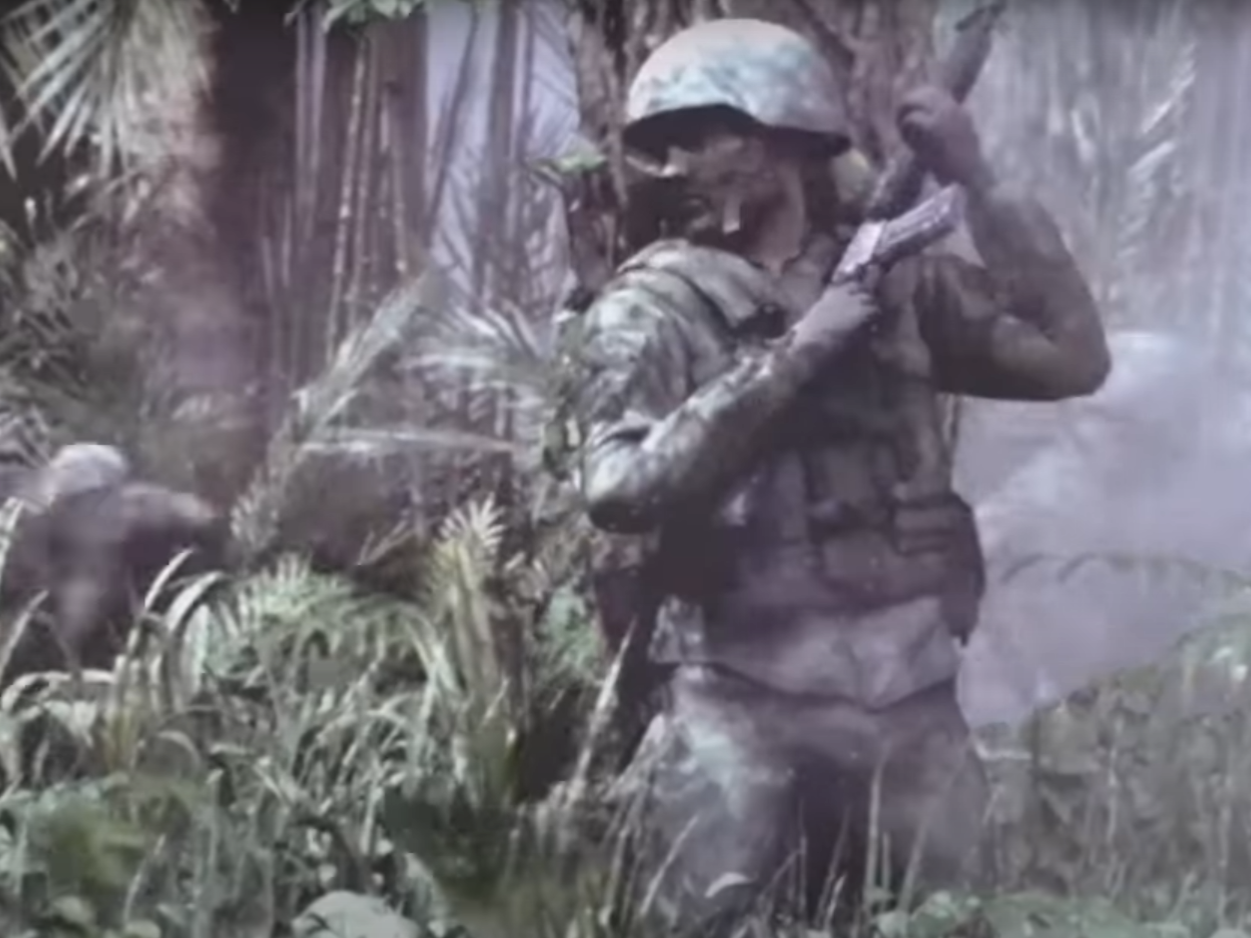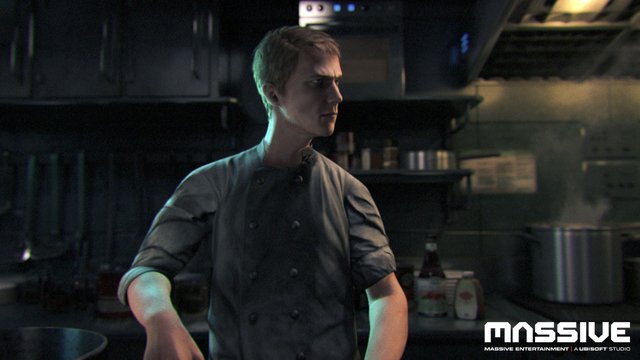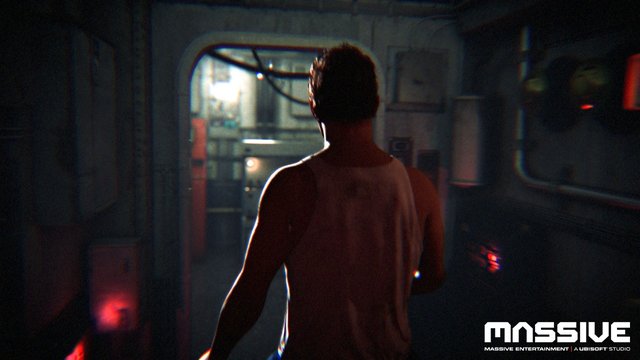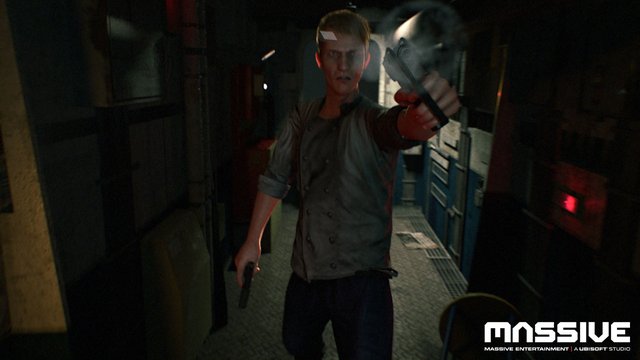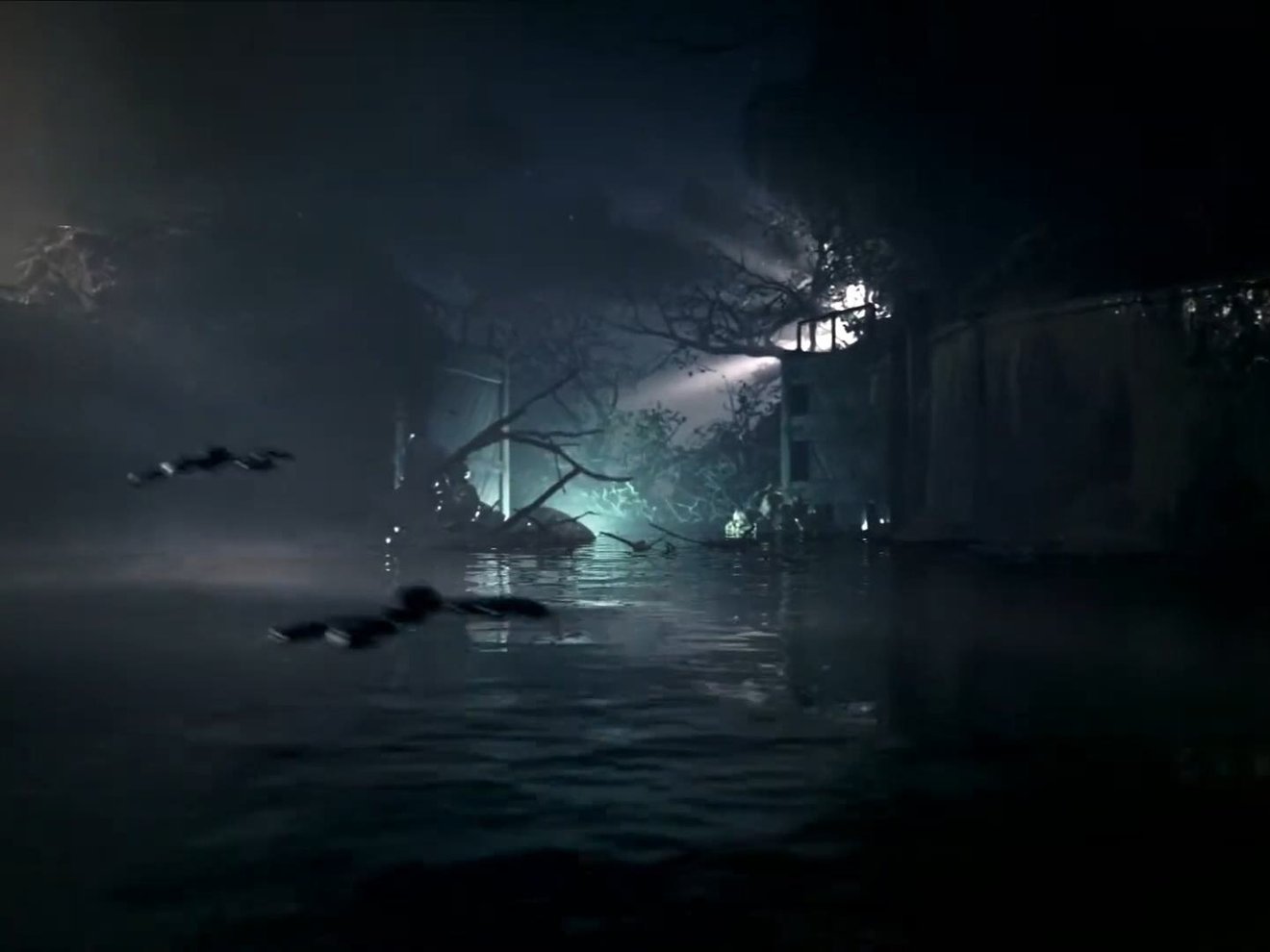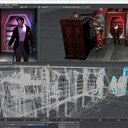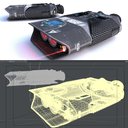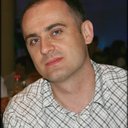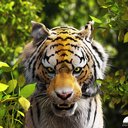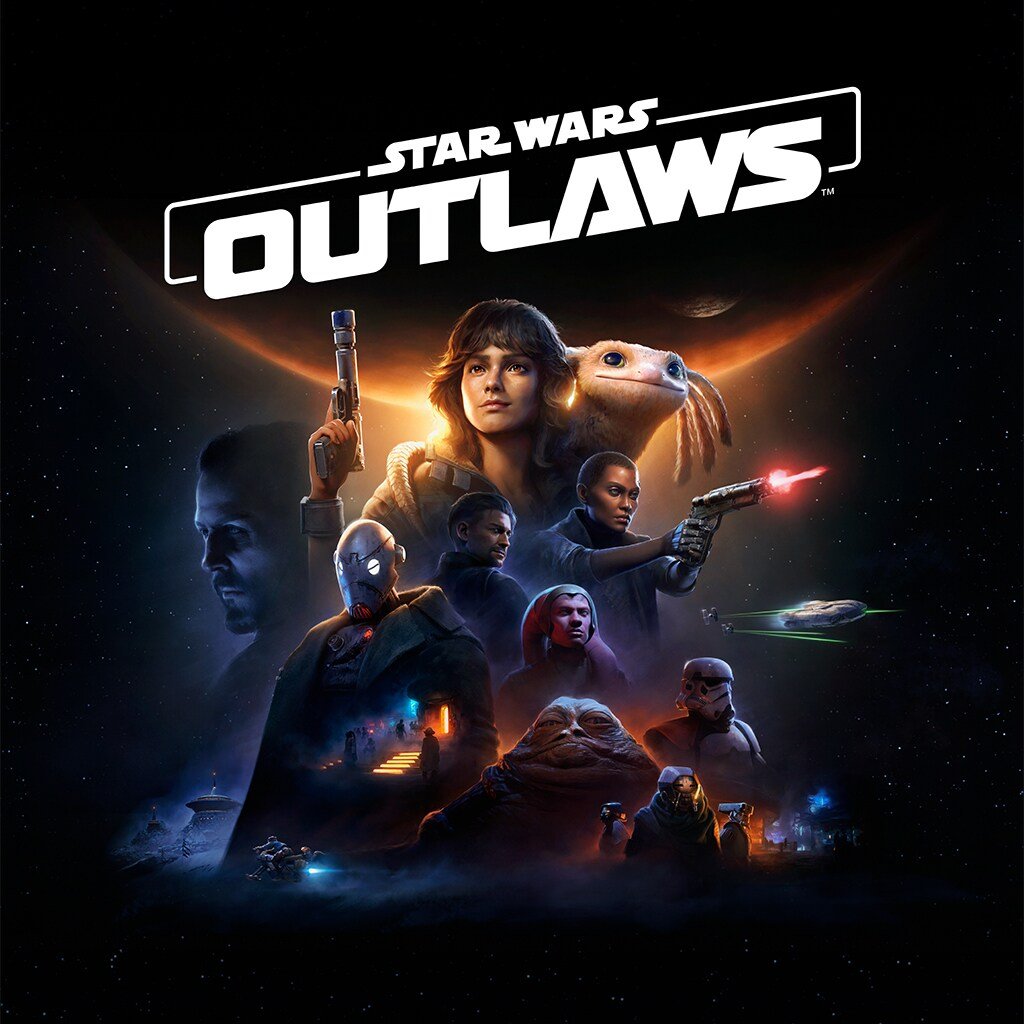
Artist focus - Mikael Burman, Massive Entertainment
Ahead of the game
LightWave Digital: Tell me a bit about when you started using LightWave?
Mikael Burman: Oh, well, we have to go back to the Amiga days then. I had an Amiga 1200 with a 68030 card with 8 megabytes of fast RAM and one of those 68882 FPU (Floating-Point Unit maths co-processor). You couldn't run LightWave without that. I had a cracked version, because this was, you know, before I had lots of money and could buy my own version, you know, my own licence.
Yeah. Yeah, so that was the first time, and I played around with it and did manage to do some stuff with it. I think I sort of found a cracked version of 3.5 and just toyed around and did some cool stuff with that stuff. I must have been 16, 17, 18, maybe. In my early 20s, I moved to a Pentium 3 system and carried on using my Amiga for Octamed. For 3D, I started to move over to PC around 2000, I think it was. The Amiga was absolutely the start for me, for sure.
LD: So, you're in your early 20s when you go to the PC and start using LightWave professionally?
MB: At that time I was on a two-year course at a place called the Kantzowska. They taught LightWave, I think it was LightWave 7, and then 7.5 or something like that. I can't remember exactly which version. After Kantzowska I went to another school for 2 years where they taught Maya for Visual Effects, Animation and Games. School of Future Entertainment was the name of that school. During this time I learned Maya but also bought my first real licence of LightWave 8 It was a student licence.
But I love LightWave. I learned so much when I was using LightWave 7 there with Sasquatch and stuff like that. So it was like, wow, I can't drop this off.
I need to keep using this one, but also learn other things that can put me in a position to be hired, right? So yeah, Maya was the big thing here in Sweden, or it still is, of course. But since then, I've always upgraded LightWave - I upgraded my LightWave 8 student licence and when LightWave 9 came out, I upgraded it to the proper version, because then I had the money to do it.
LD: And when did you start at Massive?
MB: I started at Massive in 2006. In fact, it was 1st September 2006 - I celebrated 18 years at Massive Entertainment Cinematics this month. They had a bunch of LightWave licences. When I joined, they were using LightWave 8. There were 40-60 people; it’s up to 700 now.
The game engine we used at that time for World In Conflict was very LightWave-centric. It was based on using LWOs for loading game assets and stuff like that. Later on, we could also use LWS as well. So essentially what we did was we used Maya, Motion Builder, whatever, for animation. We transferred that over to LightWave with the bones and everything.
And then, the cinematics director at that time, Tobias Strömvall, loaded those scenes we assembled in LightWave and he would set up all the cameras. He was really good with doing sort of handheld camera movements and stuff.
LD: What specific areas of LightWave do you like and is there anything you don't?
MB: One of the things I adore about LightWave is the fact that it has a separate object and scene file system. It means that in some cases I can deal with data that would be too heavy for other applications to deal with. Because, you know, if I load things in, let's say an FBX, right, that's going to generate all the object files on-disk, right? And then it's just about memory on how to, if it can load that stuff into memory, of course. I mean, I have had scenes that I needed to prepare for the animators that were exported from the Snowdrop engine, the game engine, which had maybe 10 million polygons, tops.
But it was like 5,000 objects, right? So trying to open that in Maya, in my experience, a lot of times, Maya just crashed to desktop. And then I looked at LightWave and I was like, okay, let's try this interchange in layout.
So I tried - and they loaded in Layout! It loads everything into memory without crashing for some reason; I don't know how you made that work.
Since I discovered that, LightWave has been one of the best tools I've used for prepping geometry for the animators that need the geometry as reference in either Maya or MotionBuilder. Because LightWave is so reliable. And the fact is that once you save all these objects, they will become, you know, objects on disc.
After you do that, you can then save transformed, because that's what we need. Otherwise, everything would come in at the origin if I load it into Modeler, for example. I Save Transformed using the Pro ToolsSave Objects to Directory tool. Next, in Modeler, you have the Directory Collapser, which will convert all the separate objects into a single-layered model.
And it just smashes all of those objects into one single object. Yeah. A single object that's spread out.
That is a single transform when you load it into either Maya or MotionBuilder, which speeds up animation. Because sometimes we have like four, five or six characters in the scene, which will have to interact with 5,000 static objects that have to be evaluated for each frame - it becomes a slideshow. So I've been working on developing this pipeline. And the animators that I work with, every time they need to do something like this, they always ask me to prepare this stuff for them.
They don't want anyone else because they know that I know what they need. And they don't have to explain anything. And it's just like, yeah, it just works. LightWave has been super important for that particular pipeline.
I really, really love the native render engine. I love all the work that was done for the new AOVs and also the fact that you can create your own AOVs and all of that stuff. The only thing missing now, and I have to say this, and I have to stress this, is a proper render-layer system. Do you remember Janus (a plugin)? I thought that was great.
I thought when you guys bought UberPass from Oliver, that one might be tweaked a little bit to become a good start for a render-pass system. I know it's sitting there in the background, and it's waiting for people to have time to work on it.
All characters were rendered with LightWave, and the environments were a mix of LightWave and Modo. We used an experimental solution for the GI for the characters called Spherical Harmonics, which was developed for us by DB&W. All the FX were done using 3DSMax with tools like FumeFX and Thinking Particles.
Be warned that the trailer video has very bad language - NSFW!
LD: Excellent! You're still permanently fully engaged in making cinematics. What's the most recent game you've done that you can talk about?
MB: Star Wars Outlaws was released not that long ago. I helped out with – well, I don't want to go into spoilers, but there's a cool pre-rendered thing that we did with Houdini Redshift where I helped out sorting the Motion Builder part of the delivery that we got that was a bit messy.
But I went through that and helped to sort that out so the animators could then start to go to town, so to speak. Yeah. That was the only involvement for that specific pre-render that we did. It shows up somewhere in the middle of the game, but other than that, I helped the animators prepare meshes for the in-game shots because we try to do a lot of branding using the Snowdrop engine rather than pre-render, right? Yeah. So it's going to be gameplay and stuff like that.
And sometimes we do a very choreographed thing to showcase, let's say, a specific event or a specific occasion. And then it might not be real gameplay, but it's still real-time rendering. But it's more like a sequence – like a real-time cinematic, you can say.
I'm not really an animator anymore, so all the animation credits should go to those guys. But I helped prepping them so they had all the locations so they could load reference meshes and everything into MotionBuilder, set up the camera, set up the action, and do their thing.
And then we can get that back into the engine and be rendered in-engine. So again, sometimes we also use the render engine – or a game engine – to render out a sequence of EXR files that we then can do some compositing on. And we can essentially use it as a pre-rendered tool.
LD: It's just that it's rendering in seconds rather than in hours, right?
MB: Yes, it's taking all the shortcuts that a game engine does to enable it to do the whole thing.
LD: How do you feel about the death of LightWave in 2020 and its rebirth now?
MB: I was heartbroken, to be honest, when I saw that it was shut down and hearing about some of the contractors being fired, you know, and things like that, I was like, oh, well, it's been a good ride. I was really, really sad about it. And then, all of a sudden, I get this email that, you know, there's this new Discord server! That was May 2023, right? And I was like, wait, what? LightWave, wait, what? And I joined that, and then we had this lovely presentation by Andy Bishop, Deuce, Elmar and some other people.
It was super, super, super nice to see LightWave coming back. The stuff that the guys have done so far with the software, what they have added, you know, buying third-party plugins and integrating them, I could not believe it.
LightWave is so good now. And I feel so happy to see how fast it can be developed. All that’s happened in one year with this new team? It's amazing!
The docs are looking great now with the dark mode, you and Matt Christou have done brilliantly. I really like the dark mode and it's easy to find stuff.
I do want to see the render improvements for the native render engine that have been teased at some of the official events, you know. And I hope that once they can get that going, more people may start using it as well. Because it's a really, really good, high-quality render engine.
I’d like to see the shading system go global, so you have it saved with the LightWave scene file instead of with the object file, so you can do overrides and stuff like that. That would be a great thing to improve.
LD: Do you only use the native engine? You're not interested in Octane?
MB: I only use the native engine - I played around with Octane when it came out. I bought the licence because I think it was Juanjo Gonzalez, right, that made the really good implementation. Some people even said it was one of the best implementations across the board for any 3D software that he did for LightWave, so kudos to him.
And I was playing around with it, but there were some things I just didn't like about it. It's something with the fact that I don't like unbiased render engines for some reason. I really like the biassed render engine that we have in LightWave because it means that I can learn so many other render engines by using LightWave, and I can jump between them because they work very similarly.
So that's one of the things that makes Octane stand out a little bit. If I compare Octane and Redshift, for example, I would much rather have Redshift in LightWave than Octane because Redshift works pretty much the same way LightWave native works. When it comes to sampling, it's pretty much the same thing.
It's just that it's way, way faster compared to a CPU-based renderer, of course, but they are the same principles, right? And I think Octane and Arnold are the standouts that work very differently from all the other render engines. Now with that said, I have not used all render engines out there, but for sampling etc, I think LightWave native and Redshift makes a lot of sense.
LD: If there was one thing you could change about LightWave, what would it be?
MB: I'm not into that much of a modeller, right? But what I miss in LightWave sometimes is the fact that I can't access points, polygons and edges and manipulate them easily in Layout.
I mean, I understand what I'm asking is probably much harder to add than what it sounds like, of course. Here's the thing. I really like the separate workflow, to be honest. I'm one of those guys. In Modeler, you focus on just that. I've heard some horror stories about people who work in 3ds Max, for example. They accidentally, for some reason, hit a shortcut that they didn't mean, and they don't notice it until they see, oh, wait, why did this vertex move? Oh, shit, I animated it. Because, oh, and I moved the timeline as well. So, there's always these good and bad things, you know? Pros and Cons to everything.
If I could change anything in LightWave, I’d want a proper render layer system where we could actually render, you know, or output render scene files that we then put on the render farm. I don't care how we do it, just the fact that I want to have a master scene file, and then I can, oh, I need to change this layer to be visible in this render pass, and then output that again, and then just re-init the job on a render farm.
So, something like that. I mean, Janus, more or less,
LD: How do you feel towards LightWave now? Are you optimistic for the future?
MB: I've never been more excited about LightWave going forward, ever. I think one of the nice things about it is the fact that the users can see that Andy is so, so enthusiastic about the software - every time I've watched him talk he reminds me of why I love LightWave. It’s important to have a good leader to do the presentations and stuff like that, because I think, honestly, what you guys have shown so far, I couldn't be more excited about LightWave.
Thank you so much. That is from the bottom of my heart. I mean, I cried when I learned that LightWave was resurrected; it was so emotional for me. You guys have been absolutely fantastic.
Oh… and do not forget to check out the monthly LightWave-centred podcast Andrew Comb and I are doing. It is called LightWave Digest and each month we also have a guest on to hear their stories.

